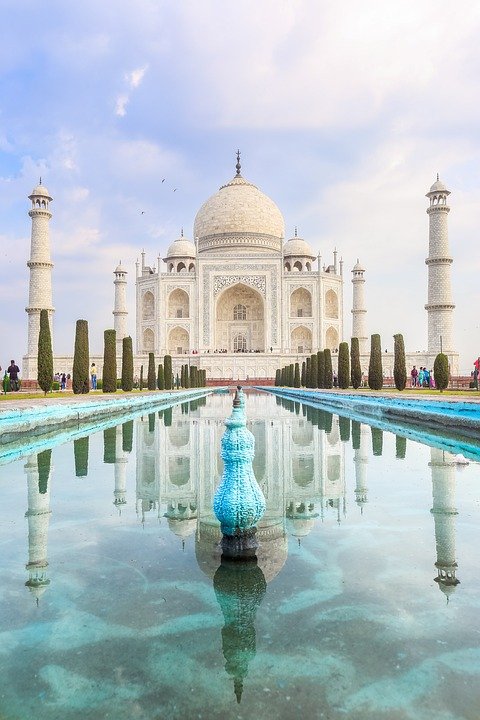Here is an article about the fight for clean air in India’s cities.
The Fight for Clean Air: Addressing the Choking Crisis in India’s Cities
The hazy morning skyline, a persistent cough in the winter air, and the acrid smell of smoke are an all-too-familiar reality for millions living in India’s urban centres. For years, cities from Delhi and Lucknow to Kolkata and Mumbai have consistently ranked among the world’s most polluted, turning the simple act of breathing into a daily health hazard. This is not just an environmental issue; it is a profound public health crisis. But across the nation, a determined fight for clean air is underway, involving policymakers, scientists, activists, and citizens who are demanding their fundamental right to breathe.
The Anatomy of the Smog
The sources of India’s urban air pollution are a complex and challenging mix, deeply intertwined with the country’s rapid economic growth and development.
- Vehicular Emissions: The explosion of private vehicles on city roads, many running on older emission standards, spews a constant stream of particulate matter (PM2.5), nitrogen oxides, and other toxins. Traffic congestion exacerbates this, turning busy intersections into hotspots of pollution.
- Industrial and Power Sector: Factories, small-scale industries, and coal-fired power plants ringing the cities often operate with inadequate emission controls. These are major contributors to sulfur dioxide and particulate pollution.
- Construction and Road Dust: A perpetual feature of expanding cities, unregulated construction sites and poorly maintained roads churn vast quantities of dust into the air, a significant component of PM10 and PM2.5.
- Agricultural Burning: Seasonally, the problem intensifies dramatically. The practice of stubble burning by farmers in neighbouring states like Punjab and Haryana sends colossal plumes of smoke drifting across the Indo-Gangetic plain, blanketing cities like Delhi in a thick, toxic smog.
- Household Pollution: In lower-income urban and peri-urban areas, the burning of solid fuels like wood, coal, and cow dung for cooking and heating contributes significantly to indoor and outdoor air pollution.
The Human and Economic Cost
The consequences of this toxic air are devastating. The microscopic PM2.5 particles are particularly insidious, capable of penetrating deep into the lungs and entering the bloodstream. This leads to a terrifying array of health problems:
- Respiratory Illnesses: A sharp rise in asthma, bronchitis, and chronic obstructive pulmonary disease (COPD).
- Cardiovascular Diseases: Increased risk of heart attacks, strokes, and hypertension.
- Long-Term Impacts: Links to lung cancer, reduced cognitive function, and developmental issues in children, who are the most vulnerable.
The economic toll is equally staggering. A 2020 report in The Lancet estimated that air pollution was responsible for 1.67 million deaths in India in 2019, with the associated economic losses from lost output amounting to 1.4% of the country’s GDP. Add to this the rising healthcare costs, reduced worker productivity, and a tarnished image for international tourism and investment, and the true cost becomes clear.
The Battle Lines are Drawn: A Multi-Pronged Attack
Recognizing the gravity of the situation, India has begun to mount a counter-offensive. The fight is being waged on multiple fronts:
-
Policy and Regulation: The government launched the National Clean Air Programme (NCAP) in 2019, aiming to reduce particulate matter concentrations in over 130 cities by 20-30% by 2024 (now updated to a 40% reduction target by 2026). In a significant move, India leapfrogged from BS-IV to BS-VI emission standards for vehicles nationwide, mandating cleaner fuel and engines to drastically cut vehicular pollution. In Delhi-NCR, the Graded Response Action Plan (GRAP) acts as an emergency measure, enforcing actions like halting construction and implementing traffic restrictions when air quality deteriorates to severe levels.
-
Technological Intervention: Technology is playing a crucial role. A growing network of real-time air quality monitoring stations provides vital data to the public and policymakers. In agriculture, the government is promoting alternatives to stubble burning, such as the Happy Seeder machine, which allows farmers to plant the next crop without clearing the residue. While their large-scale effectiveness is debated, solutions like smog towers are being trialled as localised air purifiers.
- Judicial and Citizen Activism: The judiciary, particularly the Supreme Court and the National Green Tribunal (NGT), has been a powerful force, repeatedly pushing government agencies to enforce environmental laws. Simultaneously, a groundswell of citizen activism has raised public awareness. Groups are filing public interest litigations, organizing protests, and using social media to hold authorities accountable, transforming the discourse from an environmental niche to a mainstream political demand.
The Road Ahead: Challenges and a Call for Collective Will
Despite these efforts, the path to clean air is steep. The primary challenge remains the enforcement gap—strong laws often exist on paper but are weakly implemented on the ground. Inter-state coordination is another major hurdle, as pollution does not respect administrative borders. The stubble burning issue, for example, can only be solved through a collaborative approach between the central government and multiple state governments.
Ultimately, the fight for clean air cannot be won by the government alone. It requires a fundamental shift in public consciousness and behaviour. This means embracing public transport, transitioning to electric vehicles, managing waste responsibly, and demanding sustainable development practices from industries and leaders.
The battle for blue skies over India’s cities is a marathon, not a sprint. It is a fight for the health of its children, the productivity of its workforce, and the sustainable future of its economy. The sky above India can be clear again, but it requires a collective will as vast and powerful as the nation itself. The right to breathe clean air is the most fundamental right of all, and it is a fight worth winning.

